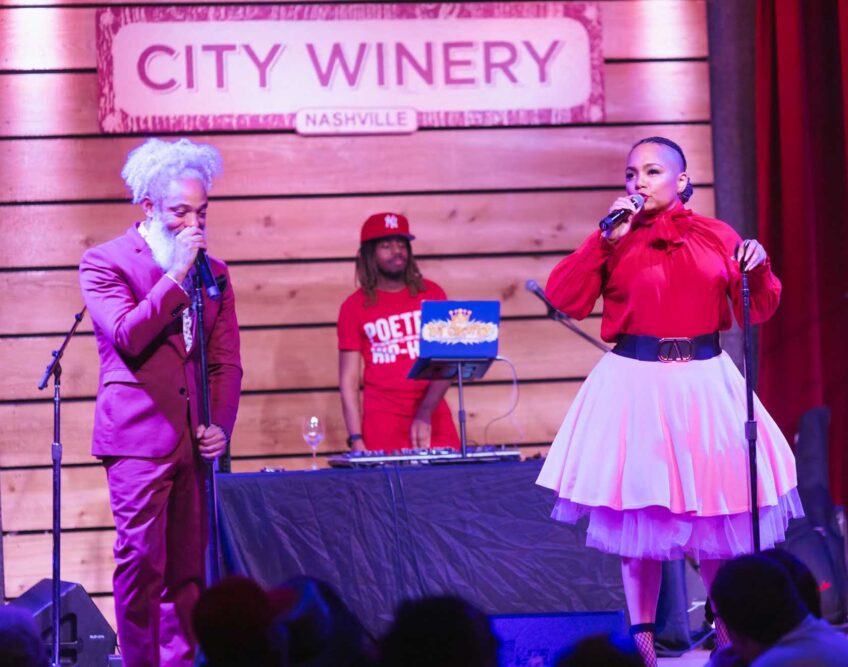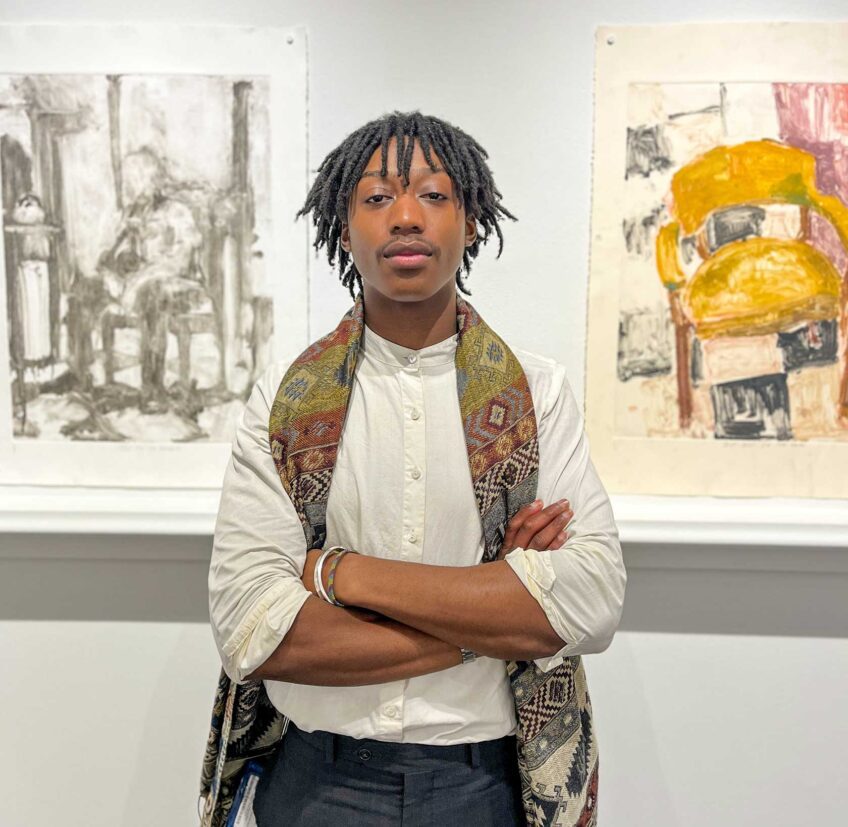‘Immigrancy:’ Samsøñ Gallery’s final show
South End exhibit explores immigrant, refugee experience
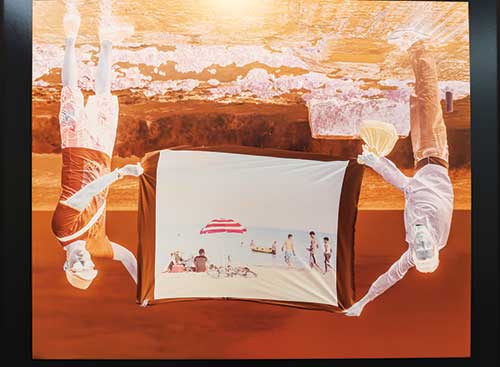
Long a haven of thoughtful shows, the Samsøñ gallery is now presenting its final exhibition after 14 years in Boston’s South End. On view through Nov. 11, the show, titled “Immigrancy,” offers a compelling sampling of works by more than 20 renowned and emerging artists who explore the experience of an outsider, newcomer, immigrant, asylum seeker or refugee.
First to catch the eye is the smallest object on view, jade handcuffs by Chinese artist and activist Ai Weiwei, known for installations on a mammoth scale (he served as artistic advisor for the Beijing Olympics) as well as his arrest for civil rights protests. Enclosed in a display case, the handcuffs evoke slave shackles, the icon of this country’s unwilling first immigrants.
Contemporary visual artists often include performance in their repertoire and even extend their artmaking into social and political activism. In 2011, Cuban-born Tania Bruguera became a founder of Immigrant Movement International, based in a Corona, Queens storefront and staffed mainly by volunteer artists who offer undocumented immigrants such practical services as legal advice, computer instruction and health classes. In the Samsøñ gallery, stacks of IMI manifestos are on view, ready for the taking.
Glenn Ligon incorporates passages from the writings of distinguished African American authors within works on paper that invest the writings with layers of added meaning. On view here is his majestic 6-by-4-foot print of a marked-up page proof from James Baldwin’s 1953 essay “Stranger in the Village” about being the first African American resident in a small Swiss town.
A sense of humor is a time-tested survival tool of an outsider, an asset that can leaven indignation and increase its staying power and expressive reach. Take renowned multimedia artist William Pope.L, whose projects addressing race have included belly-crawling his way up Broadway (“the Great White Way”) in a Superman outfit. He is represented here with an 8-by-10-inch print that states, “Blue People Are the Future.”
Nearby, a wall-mounted work by another ironist, Jimmie Durham, resembles a wooden boat model and displays the artist’s name as cutouts of multicolored laminated cards. The object evokes journeying by sea on a rickety craft, as well as a traveler’s documentation. Durham, 77, has for decades mined his Cherokee heritage as both an activist and multimedia artist, and his first North American retrospective opens in November at the Whitney Museum of American Art in New York.
Engaging works by emerging artists include a shield of bright, jagged angles painted on an ironing board by Jeffrey Gibson, of Choctaw-Cherokee descent. Scattered throughout the gallery are milk crates by Andrew Mowbray, who renders stylized versions of this ubiquitous street seating of the homeless in such materials as reclaimed maple and soda bottles. Photographs show a 2015 performance by Carlos Martiel entitled “Segregation,” in which a barrier of silver barbed wire separates the artist, standing nude, from his fully-clothed onlookers.
Gabriel Martinez portrays the duality of the Cuban-American experience with elegance and economy in a handsome digital print that combines beach scenes of 1950s Havana and contemporary Miami.
More awaits the attentive visitor, including works by the two female artists currently on view in the show: portraits of self-aware odalisques by Lalla Essaydi, born in Marrakesh and much-exhibited here in her adopted home; and Meriem Bennani’s “Fardous Funjab” video, a fake news show promoting wildly nontraditional hijabs for “avant-garde women.”
In October, the show will expand with works by additional artists, including Gabriel Orozco of Mexico and Cuban-American Maria Magdalena Campos-Pons.

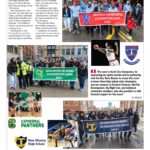
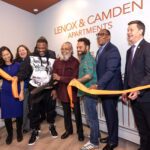
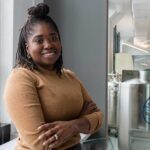
![Banner [Virtual] Art Gallery](https://baystatebanner.com/wp-content/uploads/2024/04/AmberTorres_4-667x848.jpg)
